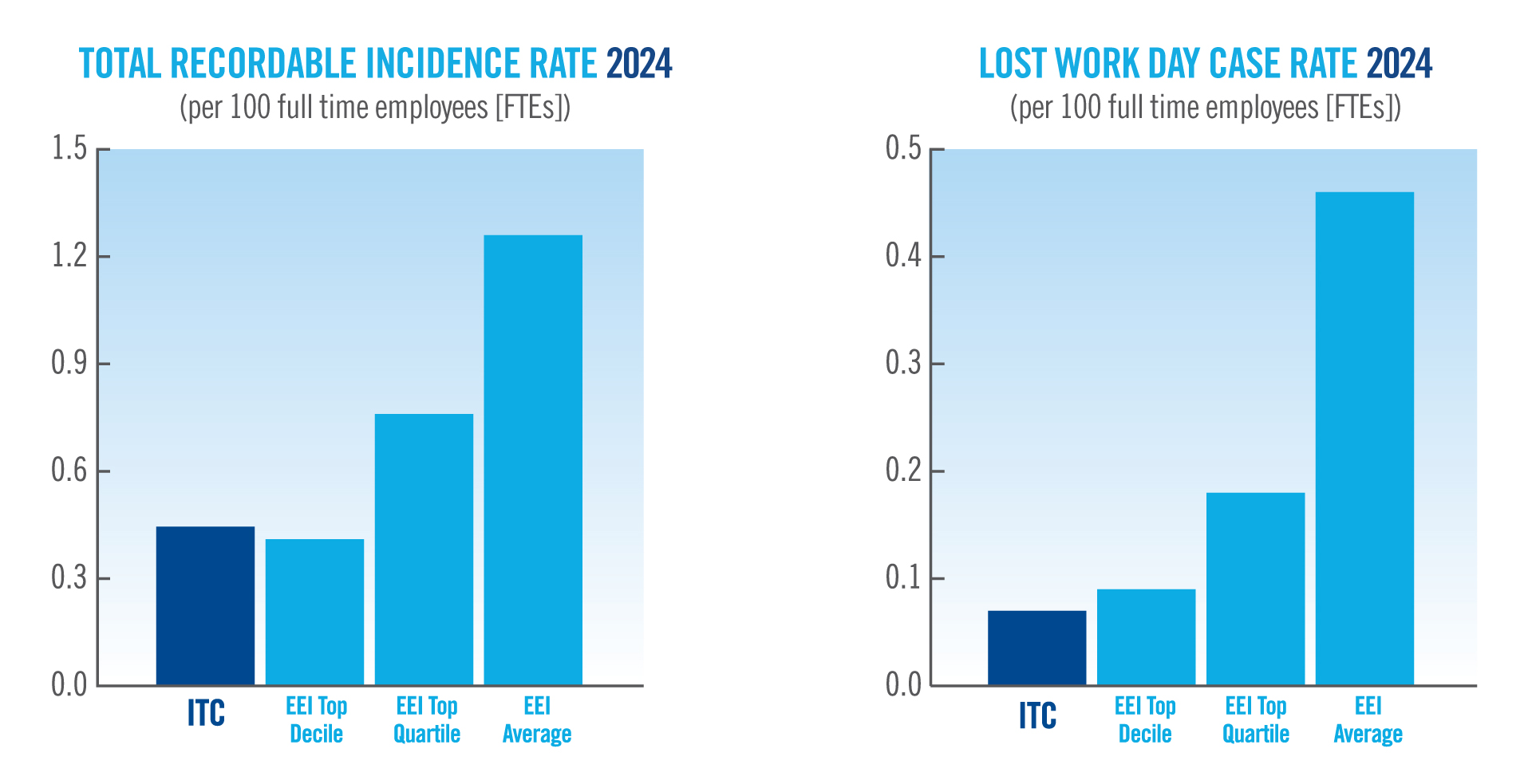
Operational Safety
Unwavering Commitment to Safety
Safety is everything. Few industries pose greater inherent hazards than ours, so the safety of our workers, facilities and the public are a priority.

ITC’s performance in recordable injuries and lost work days routinely ranks among the top of our industry, according to the Edison Electric Institute Annual Safety Survey.
Our Safety Practices Include:
- Annual safety meetings for all employees and contractors
- Ongoing safety training and a comprehensive safety handbook
- Industry-standard protective equipment
- Safety event reporting and continuous improvements
When it comes to safety, there are no shortcuts. This means everyone goes home at the end of the day, injury-free.
